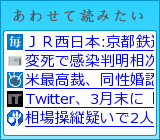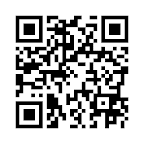Background: Little is known about the prevalence of suicidal ideation among U.S. medical students or how it relates to burnout.
Objective: To assess the frequency of suicidal ideation among medical students and explore its relationship with burnout.
Design: Cross-sectional 2007 and longitudinal 2006 to 2007 cohort study.
Setting: 7 medical schools in the United States.
Participants: 4287 medical students at 7 medical schools, with students at 5 institutions studied longitudinally.
Measurements: Prevalence of suicidal ideation in the past year and its relationship to burnout, demographic characteristics, and quality of life.
Results: Burnout was reported by 49.6% (95% CI, 47.5% to 51.8%) of students, and 11.2% (CI, 9.9% to 12.6%) reported suicidal ideation within the past year. In a sensitivity analysis that assumed all nonresponders did not have suicidal ideation, the prevalence of suicidal ideation in the past 12 months would be 5.8%. In the longitudinal cohort, burnout (P < 0.001 for all domains), quality of life (P < 0.002 for each domain), and depressive symptoms (P < 0.001) at baseline predicted suicidal ideation over the following year. In multivariable analysis, burnout and low mental quality of life at baseline were independent predictors of suicidal ideation over the following year. Of the 370 students who met criteria for burnout in 2006, 99 (26.8%) recovered. Recovery from burnout was associated with markedly less suicidal ideation, which suggests that recovery from burnout decreased suicide risk.
Limitation: Although response rates (52% for the cross-sectional study and 65% for the longitudinal cohort study) are typical of physician surveys, nonresponse by some students reduces the precision of the estimated frequency of suicidal ideation and burnout.
Conclusion: Approximately 50% of students experience burnout and 10% experience suicidal ideation during medical school. Burnout seems to be associated with increased likelihood of subsequent suicidal ideation, whereas recovery from burnout is associated with less suicidal ideation.
燃え尽きの判定は
The Maslach Burnout Inventory is a 22-item instrument that is considered the gold standard for measuring burnout
鬱の判定はスクリーニングとして
2-item Primary Care Evaluation of Mental Disorders
を使用.引っかかった人に精神科医にかかってもらうのではなく,(ここがうまいところ.飛躍といえばそうだが)
This instrument has a sensitivity of 86% to 96% and a specificity of 57% to 75% for major depressive disorder (29, 30). With a reported positive likelihood ratio of up to 3.42 for the diagnosis of major depression (30) and an estimated 25% prevalence of depression among medical students (12), a positive result implies a 50% probability of current major depression.
検査特性(感度特異度など)と有病率(医学生で25%!それはそれでびっくり)が分かっていれば,陽性的中率が検査できるので,引っかかった人の半分はうつと判定.
Medical Outcomes Study Short Form-8 (SF-8)も測定
結果はタイトルの通り.
自殺念慮と相関するのが,独身(or離婚後),借金10万ドル以上,燃え尽きスコア高値など
また燃え尽きになった人の27%が翌年に回復.
ただし.
回収率が52.4%.(アンケートにしては上等)
回答しなかった人が全員自殺念慮がないとすると,自殺念慮の割合は約半分の5.8%(燃え尽きも同様)
最後にこの論文の書き出しから.
Death by suicide is a major occupational hazard for physicians (1). The suicide rate among male physicians is more than 40% higher than among men in the general population, whereas that of female physicians is a staggering 130% higher than among women in the general population (1, 2).
医師の自殺は職業病.特に女性.自分の命と引き替えに他人の命を守っているのでしょうか.アンパンマンみたいになくなったら新しいのもらえるといいんだけど.
日本でも同じ
医学界新聞 第2601号 2004年9月20日 特集 医学生のメンタルヘルスを考える
http://www.jcp.or.jp/akahata/aik2/2003-12-01/10_01.html
筑波大学卒後臨床研修部の前野哲博助教授の研究グループがことし行った調査では、研修医の平均労働時間は平日で十三時間、休日で五時間でした。平均して週八十時間以上働いていることになります。(過労死ラインは週六十時間以上、年三千百二十時間以上といわれています)
研修医の四分の一が研修開始から二カ月でうつ状態になったことも分かりました。関連する要因として、受け持ち患者数、勤務時間、キャリアや家庭生活への不安をあげています。とくに、うつ状態の研修医の受け持ち患者数が平均で約八人あったのに対して、そうでない研修医の受け持ち患者数は約六人でした。









0 コメント:
コメントを投稿